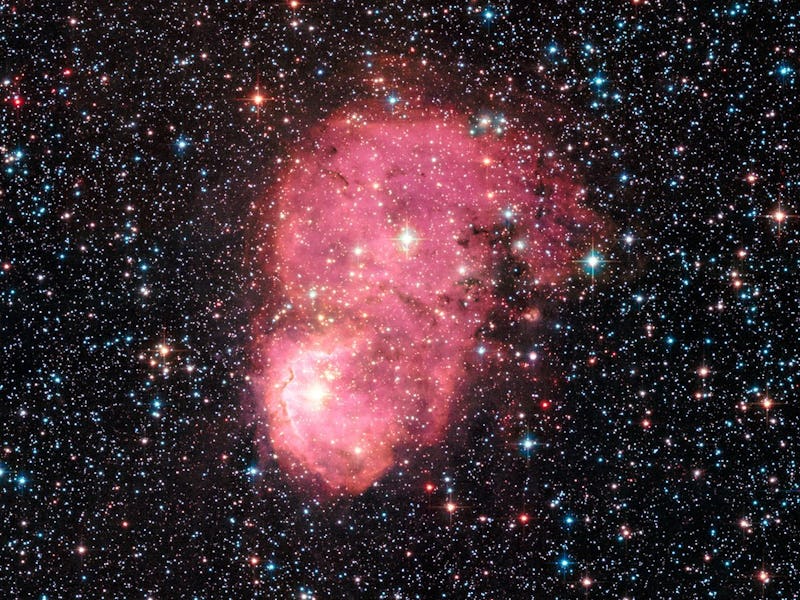Hubble Rings in the Holidays with Festive New Nebula Photo

The Hubble Space Telescope is here to get you hyped for the holidays with this stunning new image of NGC 248. The glowing pink emission nebula is nestled in the Small Magellanic Cloud, one of the Milky Way’s smallest neighbors. Despite being positioned nearly 200,000 light-years from Earth, Hubble has captured this nebula in incredible detail.
Our cosmic neighborhood is more than just the Milky Way; it’s actually a collection of galaxies called the Local Group. The Andromeda Galaxy and the Milky Way are the two largest pillars of this cosmic community, with several smaller galaxies swarming around the massive duo — like the Large and Small Magellanic Clouds which can easily be seen with the naked eye from the southern hemisphere.
In September 2015, Hubble trained its gaze on the smaller of the two dwarf satellites and spied somewhat of an illusion. Hubble observed two festive-looking emission nebulae shining as one, which are featured in the dazzling new image. The nebulae are so close that they appear conjoined, and as such are collectively known as NGC 248.
Discovered in 1834 by the astronomer Sir John Herschel, NGC 248 spans about 60 light-years long by 20 light-years wide, and is situated in the constellation of Tucana, approximately 200,000 light-years from Earth.
While the new image is quite brilliant, there’s more to it than meets the eye. The nebula’s population of young stars, are blasting their surroundings with intense radiation that is causing hydrogen in the nebulae to glow pink. But that’s not all. NGC 248 is harboring a treasure trove of scientific data, just waiting for astronomers to uncover it.
NGC 248 shines brightly in this new Hubble image.
The nebula was observed as part of a Hubble survey, called the Small Magellanic cloud Investigation of Dust and Gas Evolution (aka SMIDGE), which is tasked with helping scientists better understand how the dust supply — an integral component of galaxies and star formation — in the Small Magellanic Cloud differs from dust in the Milky Way.
Hubble’s observations reveal that the Small Magellanic Cloud has a smaller supply — between one-tenth and one-fifth less — of the heavy elements needed to make the dust. This tells astronomers that the dust supply in the Small Magellanic Cloud is similar to what we expect to see in galaxies in the early Universe.
Astronomers hope Hubble’s observations of NGC 248 will help them better understand the role that dust played in the early universe.
“It is important for understanding the history of our own galaxy, too,” the study’s principal investigator, Karin Sandstrom, an assistant professor at the University of California, San Diego’s Center for Astrophysics & Space Sciences, said in a statement. “Dust is a really critical part of how a galaxy works, how it forms stars.”